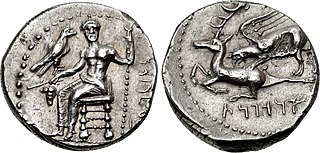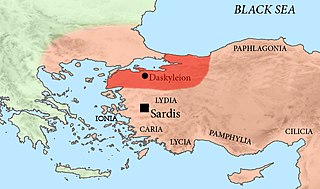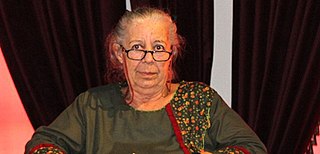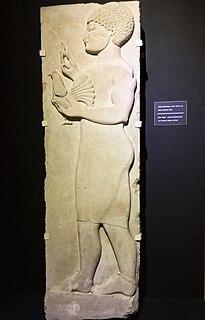Related Research Articles

Darius I, commonly known as Darius the Great, was the third Persian King of Kings of the Achaemenid Empire, reigning from 522 BCE until his death in 486 BCE. He ruled the empire at its peak, when it included much of West Asia, parts of the Caucasus, parts of the Balkans, most of the Black Sea coastal regions, Central Asia, as far as the Indus Valley in the far east and portions of north and northeast Africa including Egypt (Mudrâya), eastern Libya, and coastal Sudan.

Ochus, better known by his dynastic name of Artaxerxes III was King of Kings of the Achaemenid Empire from 358 to 338 BC. He was the son and successor of Artaxerxes II and his mother was Stateira.

Artaphernes, flourished circa 513–492 BC, was a brother of the Achaemenid king of Persia, Darius I, satrap of Lydia from the capital of Sardis, and a Persian general. In his position he had numerous contacts with the Greeks, and played an important role in suppressing the Ionian Revolt.

Cyrus II of Persia, commonly known as Cyrus the Great, and also called Cyrus the Elder by the Greeks, was the founder of the Achaemenid Empire, the first Persian empire.

The Royal Road was an ancient highway reorganized and rebuilt by the Persian king Darius the Great of the first (Achaemenid) Persian Empire in the 5th century BC. Darius built the road to facilitate rapid communication throughout his large empire from Susa to Sardis. Mounted couriers of the Angarium were supposed to travel 1,677 miles (2,699 km) from Susa to Sardis in nine days; the journey took ninety days on foot.

Ariarathes I was the last Achaemenid Persian governor (satrap) of the province (satrapy) of Northern Cappadocia, serving from the 340s BC to 331 BC. He led defensive efforts against the Macedonian invasion, commanded by Alexander the Great, and later fought at the Battle of Gaugamela under Darius III, the last King of Kings of the Achaemenid Empire. After the fall of the Achaemenid Empire, Ariarathes continued his resistance against the Macedonians, ruling concomitantly as an Achaemenid remnant and a precursor to the Kingdom of Cappadocia. He is regarded as the founder of the Iranian Ariarathid dynasty.

The Achaemenid Empire issued coins from 520 BCE–450 BCE to 330 BCE. The Persian daric was the first gold coin which, along with a similar silver coin, the siglos represented the first bimetallic monetary standard. It seems that before the Persians issued their own coinage, a continuation of Lydian coinage under Persian rule is likely. Achaemenid coinage includes the official imperial issues, as well as coins issued by the Achaemenid provincial governors (satraps), such as those stationed in Asia Minor.

Tushpa was the 9th-century BC capital of Urartu, later becoming known as Van which is derived from Biainili the native name of Urartu. The ancient ruins are located just west of Van and east of Lake Van in the Van Province of Turkey. In 2016 it was inscribed in the Tentative list of World Heritage Sites in Turkey.

The Satrapy of Lydia, known as Sparda in Old Persian, was an administrative province (satrapy) of the Achaemenid Empire, located in the ancient kingdom of Lydia, with Sardis as its capital.

Gordion was the capital city of ancient Phrygia. It was located at the site of modern Yassıhüyük, about 70–80 km (43–50 mi) southwest of Ankara, in the immediate vicinity of Polatlı district. Gordion's location at the confluence of the Sakarya and Porsuk rivers gave it a strategic location with control over fertile land. Gordion lies where the ancient road between Lydia and Assyria/Babylonia crossed the Sangarius river. Occupation at the site is attested from the Early Bronze Age continuously until the 4th century CE and again in the 13th and 14th centuries CE. The Citadel Mound at Gordion is approximately 13.5 hectares in size, and at its height habitation extended beyond this in an area approximately 100 hectares in size. Gordion is the type site of Phrygian civilization, and its well-preserved destruction level of c. 800 BCE is a chronological linchpin in the region. The long tradition of tumuli at the site is an important record of elite monumentality and burial practice during the Iron Age.

Arsames was an Achaemenid satrap of ancient Egypt during the 5th century BC, at the time of the 27th Dynasty of Egypt.

The Tomb of Payava is a Lycian tall rectangular free-standing barrel-vaulted stone sarcophagus, and one of the most famous tombs of Xanthos. It was built in the Achaemenid Persian Empire, for Payava, who was probably the ruler of Xanthos, Lycia at the time, in around 360 BC. The tomb was discovered in 1838 and brought to England in 1844 by the explorer Sir Charles Fellows. He described it as a 'Gothic-formed Horse Tomb'. According to Melanie Michailidis, though bearing a "Greek appearance", the Tomb of Payava, the Harpy Tomb and the Nereid Monument were built according to the main Zoroastrian criteria "by being composed of thick stone, raised on plinths off the ground, and having single windowless chambers".

The Achaemenid Empire, also called the First Persian Empire, was an ancient Iranian empire that was based in Western Asia and founded by Cyrus the Great in 550 BC. It reached its greatest extent under Xerxes I, who conquered most of northern and central ancient Greece. At its greatest territorial extent, the Achaemenid Empire stretched from the Balkans and Eastern Europe in the west to the Indus Valley in the east. The empire was larger than any previous empire in history, spanning a total of 5.5 million square kilometers.

Hellespontine Phrygia or Lesser Phrygia was a Persian satrapy (province) in northwestern Anatolia, directly southeast of the Hellespont. Its capital was Dascylium, and for most of its existence it was ruled by the hereditary Persian Pharnacid dynasty. Together with Greater Phrygia, it made up the administrative provinces of the wider Phrygia region.

The Xerxes I inscription at Van, also known as the XV inscription, is a trilingual cuneiform inscription of the Achaemenid King Xerxes I. It is located on the southern slope of a mountain adjacent to the Van Fortress, near Lake Van in present-day Turkey. When inscribed it was located in the Achaemenid province of Armenia. The inscription is inscribed on a smoothed section of the rock face near the fortress, approximately 20 metres above the ground. The niche was originally carved out by Xerxes' father, King Darius, but he left the surface blank.

Mitrobates ; c. 520 BCE) was an Achaemenid satrap of Daskyleion under the reigns of Cyrus the Great, by whom he was nominated, and Cambyses. After Cambyses died, and during the struggles for succession that followed, he is said to have been assassinated, together with his son Cranaspes, by the neighbouring satrap of Lydia, Oroetes, who had expansionist views on Anatolian territory. After that, Oroetes added the territory of Hellespontine Phrygia to his own territory of Lydia.
After Cambyses had died and the Magians won the kingship, Oroetes stayed in Sardis, where he in no way helped the Persians to regain the power taken from them by the Medes, but contrariwise; for in this confusion he slew two notable Persians, Mitrobates, the governor from Dascyleium, who had taunted him concerning Polycrates, and Mitrobates' son Cranaspes; and besides many other violent deeds, when a messenger from Darius came with a message which displeased him, he set an ambush by the way and killed that messenger on his journey homewards, and made away with the man's body and horse. So when Darius became king he was minded to punish Oroetes for all his wrongdoing, and chiefly for the killing of Mitrobates and his son.

Pissuthnes, also known as Pissouthnes, was an Achaemenid satrap of Lydia, which included Ionia, circa 440–415 BCE. His capital was Sardis. He was the son of Hystaspes, probably himself the son of Darius I, which shows his Persian origin and his membership of the Achaemenid dynasty. He held the satrapy for over twenty years, and became extremely rich as a consequence.

Tomris Bakır was a classical archaeologist from Turkey, who specialised in ceramics, and was the Director of Excavations at Daskyleion.

The Gökçeler relief is an Achaemenid-era tomb relief made in the Anatolian-Persian style. It was found in 2004 in the village of Gökçeler in Manisa Province of present-day Turkey. The area of discovery corresponds to the northern part of the historic region of Lydia, at a time when it was a satrapy (province) of the Achaemenid Persian Empire. The relief is made out of limestone and measures 1.79m × 0.55m × 0.25m. The relief is a "distinctive product of the artistic synthesis classified as Graeco-Persian or Anatolian-Persian". It was created between the late 6th century and early 5th century BC. It may be used as "yet further evidence for the presence of Persians in the region".

Greco-Persian art, also Graeco-Persian art or Anatolian-Persian is an artistic synthesis between Ancient Greek art and Achaemenid Persian art, which can mainly be seen in the archaeological finds of ancient Anatolia in present-day Turkey. It is part of the evidence of "the presence of Persians in the region". It has been defined as "a peculiar blend of Hellenistic and Achaemenid, or pseudo-Achaemenid, styles" in the Anatolian peninsula under Achaemenid rule.
References
- ↑ "Curriculum Vitae: Elspeth R. M. Dusinberre". Colorado.academia.edu. Retrieved 12 August 2020.
- ↑ https://deepblue.lib.umich.edu/handle/2027.42/130704 Satrapal Sardis: Aspects of empire in an Achaemenid capital. Dusinberre, Elspeth Rogers McIntosh 1997
- ↑ "Elspeth Dusinberre". Colorado.edu. Retrieved 12 August 2020.